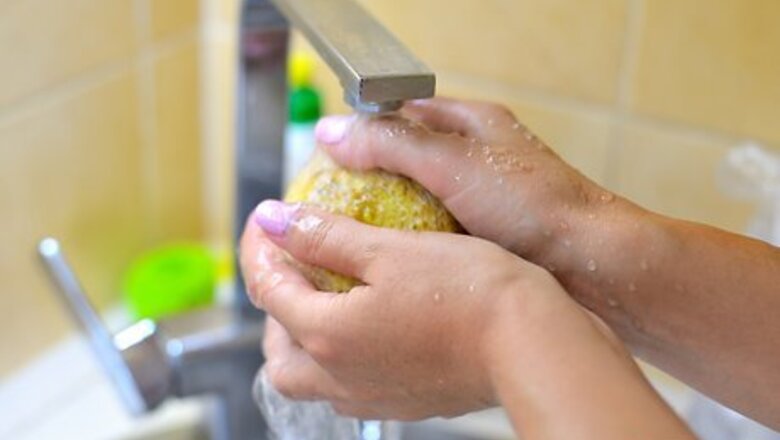
views
Making Mashed Rutabaga
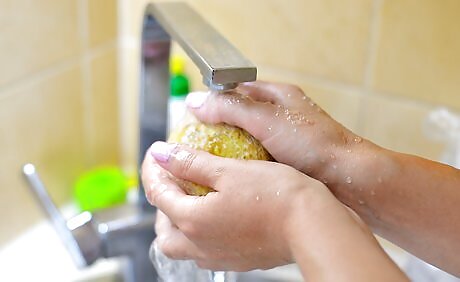
Wash the rutabaga. Rinse the rutabaga under cool water and scrub the skin with a vegetable brush. This will remove any excess dirt from the surface of the vegetable. Pat the rutabaga dry with a clean towel or paper towel. Make sure that the rutabaga is completely dry to prevent an accident when you're peeling and chopping. EXPERT TIP When picking out a rutabaga to eat, it's typically thought that the smaller roots yield a sweeter taste. Vanna Tran Vanna Tran Experienced Cook Vanna Tran is a home cook who started cooking with her mother at a very young age. She has catered events and hosted pop-up dinners in the San Francisco Bay Area for over 5 years. Vanna Tran Vanna TranExperienced Cook
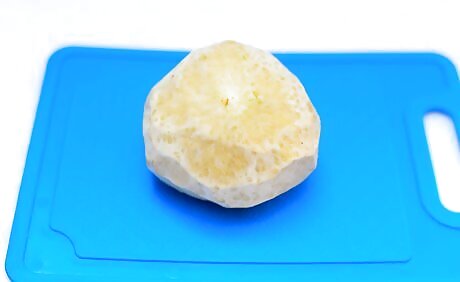
Peel the rutabaga. Carefully slice off the top and bottom stems from the rutabaga. Trim about ½ inch (1.3 cm) off the top and bottom. Stand the rutabaga on the top end and cut it in half. Use a paring knife to carefully peel off the top layer of skin. Vegetable peelers aren't always effective for rutabaga, which has a skin that’s often covered in a thick waxy coating. EXPERT TIP Vanna Tran Vanna Tran Experienced Cook Vanna Tran is a home cook who started cooking with her mother at a very young age. She has catered events and hosted pop-up dinners in the San Francisco Bay Area for over 5 years. Vanna Tran Vanna Tran Experienced Cook Vanna Tran, experienced cook, suggests: "For extra stability when peeling your rutabagas, cut your rutabaga in half lengthwise and place the freshly cut, flat side onto your cutting board."
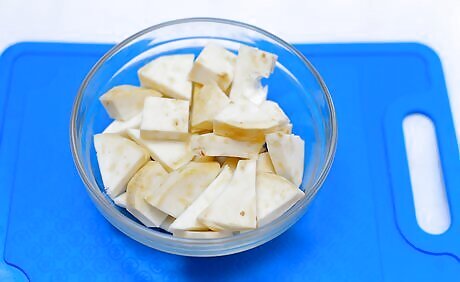
Chop the rutabaga into small chunks. Use a kitchen knife and cut the peeled halves into 1-inch (2.5-cm) chunks. This will help the rutabaga to cook faster. Cut all the chunks to the same size and thickness to ensure even cooking.
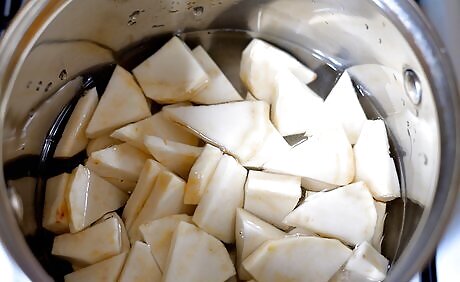
Boil the rutabaga. Transfer the chunks to a large stockpot and cover the rutabaga with water. Add an extra inch or two (2.5 to 5 cm) of water to ensure the rutabaga is completely covered. Put on a lid and heat the rutabaga over medium-high heat. When the water comes to a boil, reduce the heat to medium and simmer for another 30 to 40 minutes. The rutabaga is ready when a fork can easily pierce the flesh.
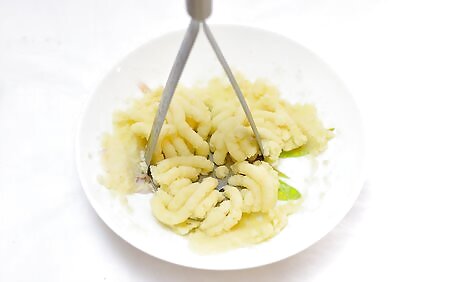
Drain and mash the rutabaga. When the rutabaga is cooked through, pour the contents of the stockpot through a colander to drain the water. Return the rutabaga to the pot. Add the butter and nutmeg. Use a potato masher, hand mixer, or fork to mash the rutabaga until it’s smooth. You can leave some small chunks of rutabaga in the mash if you like, or puree it until it’s completely smooth and free of chunks. For an extra creamy mash, add a dollop of sour cream to the rutabaga as well.

Season before serving. Add salt and pepper, to taste, and stir the seasonings into the mash. You can also add fresh or dried herbs, such as dill, oregano, or rosemary, or other seasonings like minced garlic. Serve the mashed rutabaga while it’s still hot, either on its own or as a side dish with roast beef, duck, or stir fry.
Making Roasted Rutabaga
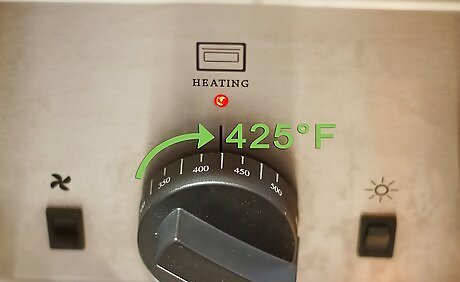
Preheat the oven. Rutabaga is best roasted at 425 F (218 C), so set the oven and let it preheat to that temperature. Line a baking sheet with cooking spray, parchment paper, or a silicone mat. This will prevent the rutabaga from sticking to the pan.
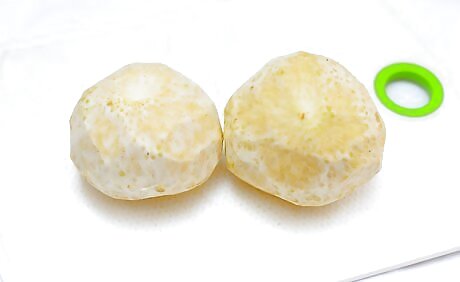
Wash, peel, and chop the rutabaga. Scrub the rutabaga with a vegetable brush under running water. Cut off the top and tail, and cut the rutabaga in half. Peel the skin off with a paring knife, being very careful not to cut yourself. Chop the rutabaga into 1-inch (2.5-cm) chunks.
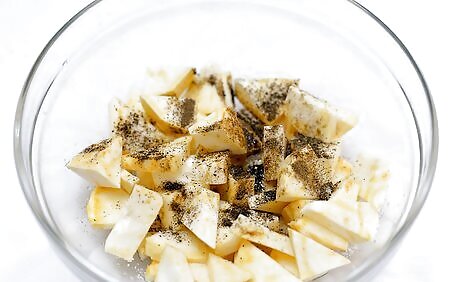
Oil and season the chunks. Transfer the chunks to a large mixing bowl. Drizzle the oil over the chunks. Season the rutabaga with salt and pepper, to taste. Toss everything together to coat the chunks with the oil and seasonings. Other seasonings you can add to the rutabaga include garlic powder, dried rosemary, fresh minced garlic, onion powder, or a small minced onion.
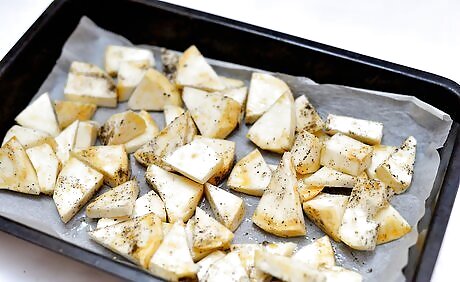
Roast the rutabaga in the oven. Spread the rutabaga out evenly on the baking sheet and place it in the oven. Bake the rutabaga for about 40 minutes, until it’s tender and golden brown. After 40 minutes, pierce a chunk with a fork. The rutabaga is ready if the fork enters easily and the rutabaga feels soft.
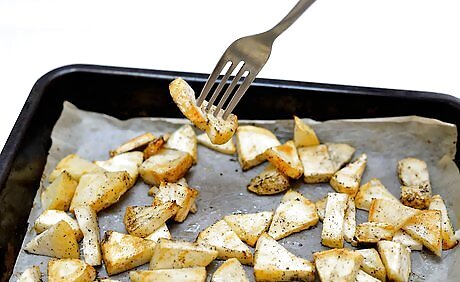
Serve hot. Use an oven mitt to remove the cooked rutabaga from the oven. Transfer the roasted chunks to a serving bowl, or portion them out onto individual plates and serve with meat, fish, or a vegetable-based protein.
Cooking Rutabaga Other Ways
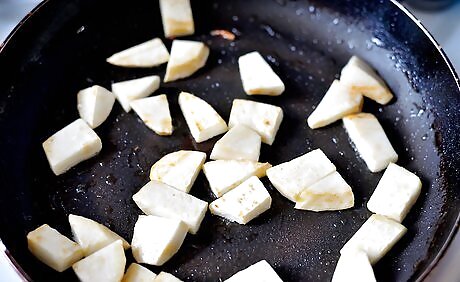
Stir fry it. Heat a tablespoon (15 ml) of vegetable oil in a large, heavy-bottomed skillet. Wash, peel, and cut a rutabaga into thin slices. When the oil is shimmering, add the rutabaga slices. Cook the slices for about seven minutes, until golden brown and soft. Season with salt, pepper, garlic, and other seasonings if desired. You can either eat stir fried rutabaga on its own, or cook it with other vegetables, meats, or rice.

Braise it. Wash, peel, and thinly slice a rutabaga. Arrange the slices in a thin layer in a large skillet. Add enough broth, stock, water, or cream to the pan to completely cover the bottom of the pan. Cover the pan and cook the rutabaga on medium heat for 15 to 20 minutes, until soft. As the rutabaga cooks, stir it every two to three minutes to ensure even cooking.
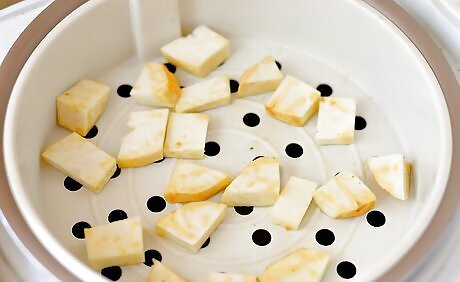
Try steamed rutabaga. Wash, peel, and dice a rutabaga into 1-inch (2.5-cm) chunks. Place the chunks into a metal steamer basket or the steamer basket that comes with a steamer. Fill the bottom of a saucepan or steamer with water. Turn on the steamer and cook the rutabaga for 25 to 35 minutes, until tender and soft.
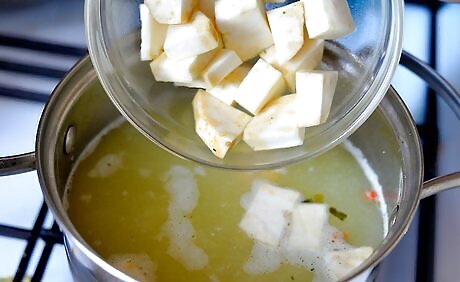
Add it to soup. Rutabaga is a delicious root vegetable that can be used in many different types of soups. You can add rutabaga chunks to vegetable, beef and vegetable, minestrone, or even potato and leek soups. You can also use rutabaga to replace some of the vegetables called for in potato, carrot, or other root vegetable soups.
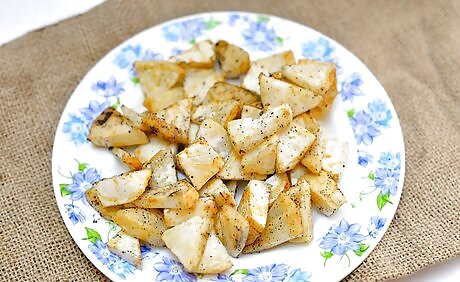
Finished.












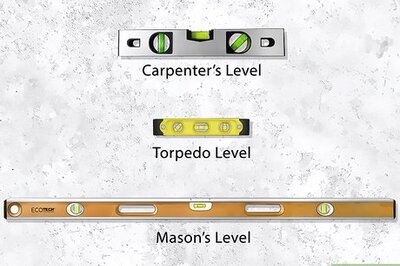


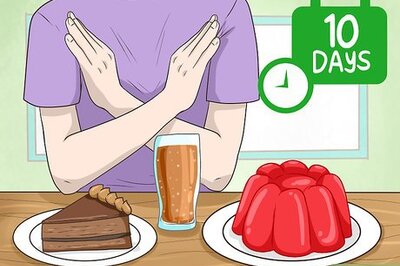




Comments
0 comment